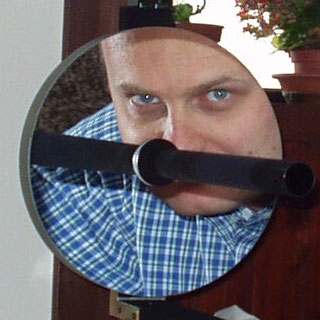THE MOON

|
|
|
|
I was happy to know some my friends. They have improved my lunar activity for the GLR group, sharing many works with me. |
|
|
|
|
My name is Jim Phillips. I
began observing in 1965 when my Mom gave me a 2.5"
reflector for my 15th birthday. I still have the
notebook full of observations I made with that
scope. I have kept an astronomical journal ever
since. I came across a drawing of Posidonius in the
back of a Cave-Astrola catalogue and I was hooked. I
wanted to see detail like that for myself. I have
drawn Posidonius first with a 6" F/8 Dynascope May
2, 1968, then an 8" F/6 Meade Newtonian, 4" and 7"
maksutovs and 6" and 9" apochromatic refractors.
For a while I was Director of the ALPO Lunar Dome
Survey. Until 1 year ago I was almost totally a
visual observer making drawing and taking notes at
the eyepiece. I began imaging in October 2003 and
have contrinued |
|
|
|
||
|
|
|
My name is KC Pau- Currently, I mainly use a 10″ f/6 Newtonian reflector for my visual observation and imaging of the Moon and Planets. For high resolution imaging, I use a 5x barlow and a Philips Toucam Pro webcam. The advantage of using webcam is that it can catch the best seeing moment during the image capture process. Then the AVI file is processed and stacked with Registax and the resulting image is further processed with Photoshop. However, my CN212 is also a fine telescope for visual observation and imaging too. I used it to take many fine lunar images before I acquire the 10″ reflector. I am a workshop instructor in a local vocational institute. My observing site is located just on the outskirts of the city center of Hong Kong. It’s surrounded by skyscrapers. During the night, flood lights from commercial buildings illuminate the sky like the day. Under this sky condition, I limit myself to observe bright heavenly objects such as the Moon and the Planets. However, the hot air currents dissipated from neighbourhood air-conditioners affect the seeing condition very much. The seeing condition at my site is always around 4~5/10 and seldom reaches 7/10 or higher. The only way I can do is to wait for the short but best moment to press down the CAPTURE button. The waiting time may be an hour or more. Anyway, I have to wait for the objects to come out from the neighbouring skycrapers. |
|
|
My name is
Maria Teresa Bregante. |
|
|
|
 |
I was born in 1973 in
Massa, Tuscany, and I started my passion with Astronomy in 1995 when the
beatiful Hale-Bopp comet appeared in the sky and caught my attention. |
|
Chuck is the author of The Modern Moon - A Personal View and of The Lunar 100 Card, and coauthor of Volcanoes of North America and Astronaut's Guide to Terrestrial Impact Craters. He writes the monthly Exploring the Moon column in Sky and Telescope and created the following web sites: Although he has been a NASA civil servant, Chuck still observes with a 5" Mak-Newt and admires the wonderful work done by members of GLR.
|